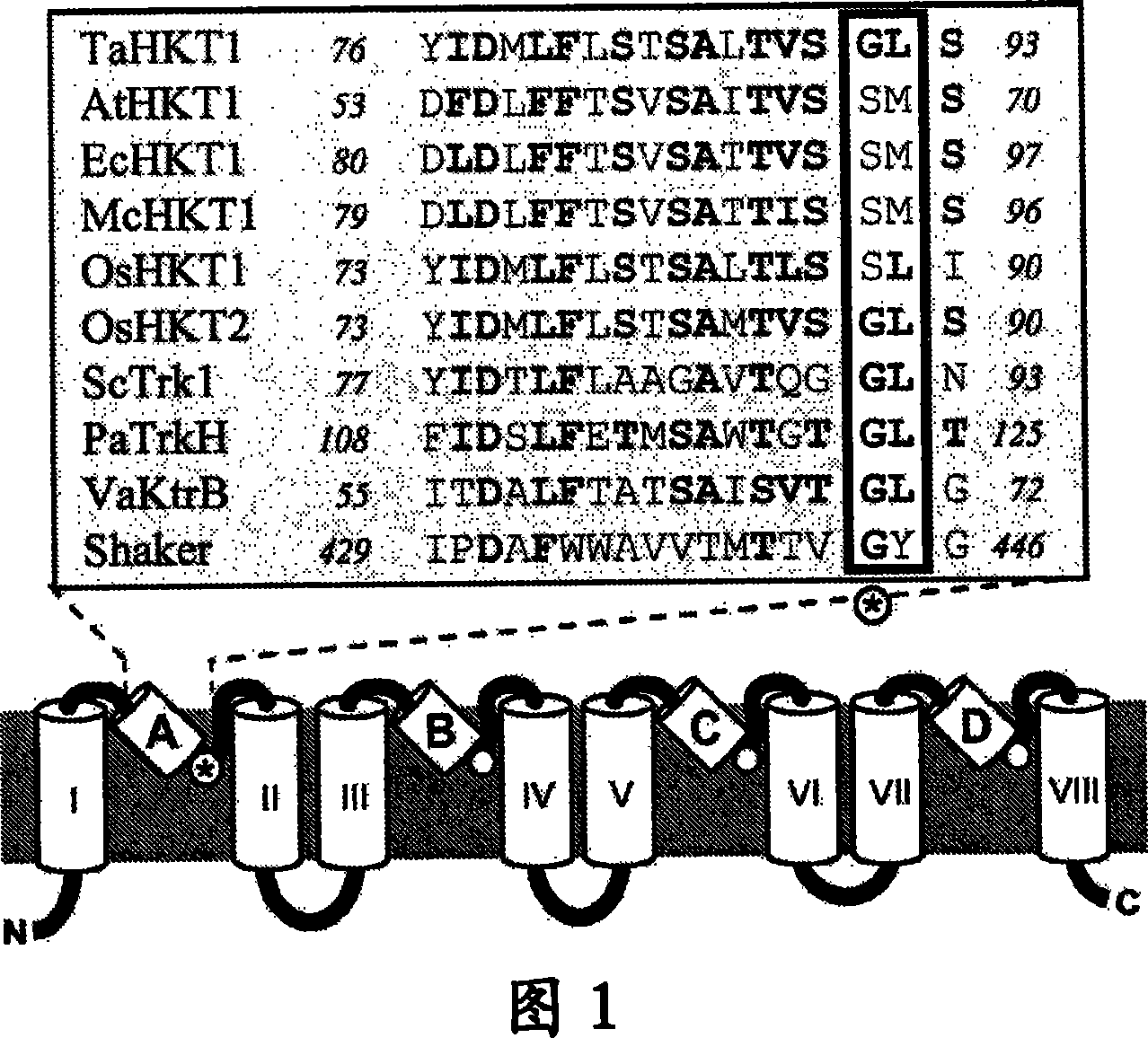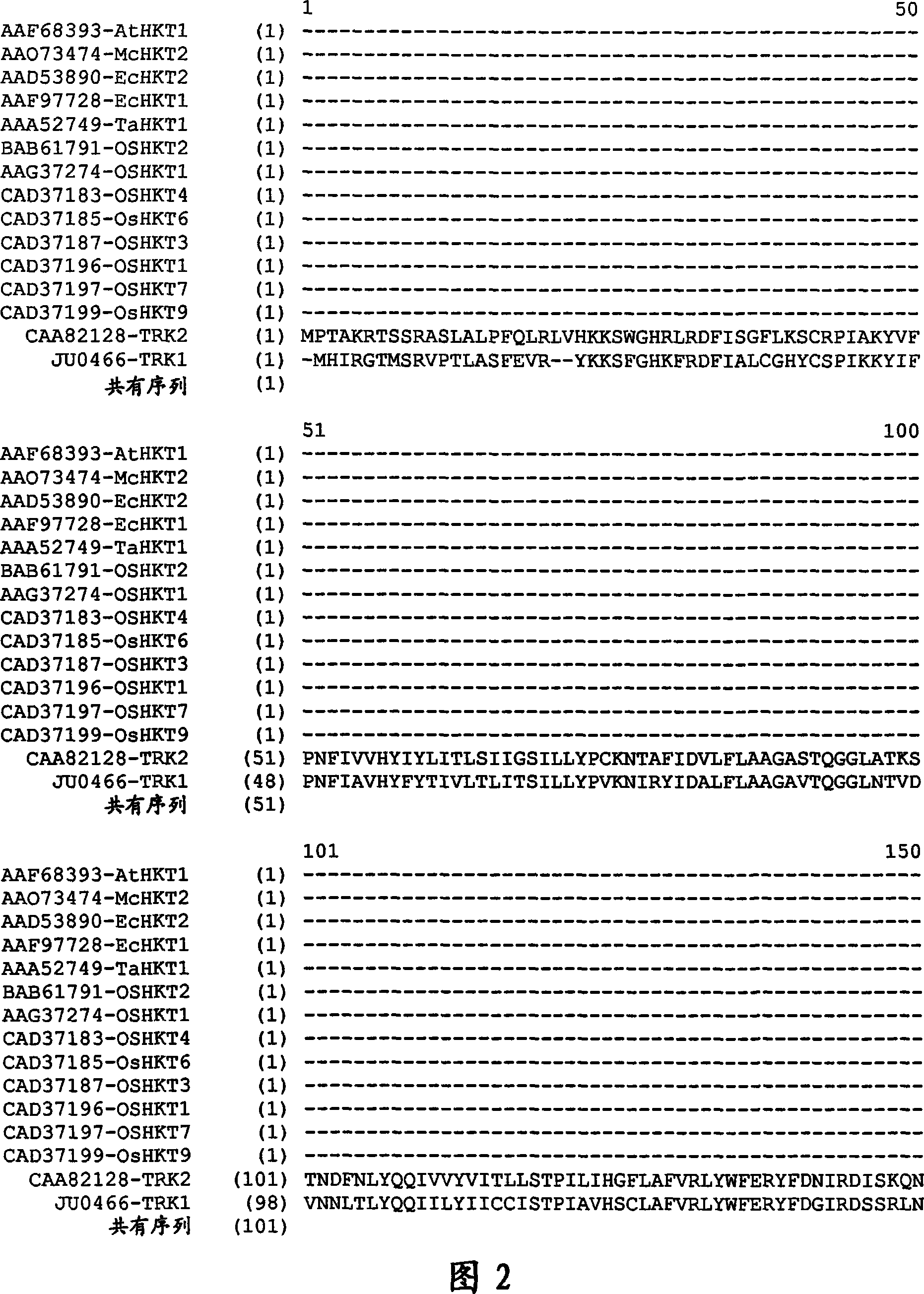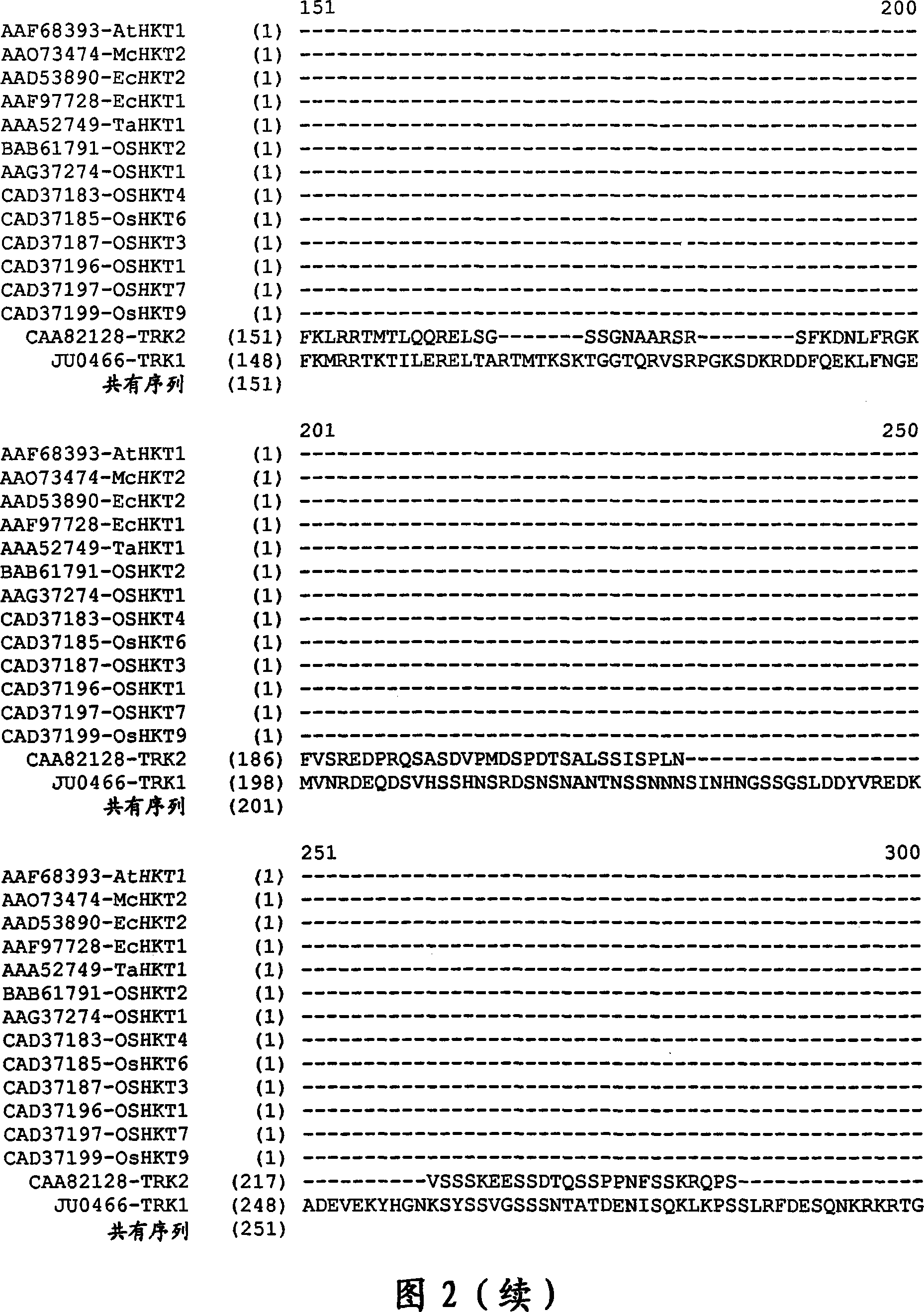Plants having improved growth characteristics and method for making the same
A growth characteristic and plant technology, applied in the field of molecular biology, can solve the problems of not fully reflecting the function of HKT1 and the complex conditions of HKT1 expression downregulation, and achieve the effect of improving growth characteristics and increasing yield
- Summary
- Abstract
- Description
- Claims
- Application Information
AI Technical Summary
Problems solved by technology
Method used
Image
Examples
Embodiment 1
[0149] Example 1: Gene cloning
[0150] The Arabidopsis thaliana seedling cDNA library (Invitrogen, Paisley, UK) was used as a template to amplify the Arabidopsis HKT gene (CDS1523) by PCR. After reverse transcription of the RNA extracted from the seedlings, the cDNA was cloned into pCMV Sport 6.0. The average insert size of the library is 1.5kb, and the number of original clones is in the order of 1.59×10 7 cfu. In 6×10 11 After the first amplification of cfu / ml, the original titer is determined to be 9.6×10 5 cfu / ml. After extracting the plasmid, 200 ng template was used in 50 μl PCR mix. The primers used for PCR amplification (which include the AttB site of Gateway recombination) are prm3283 (SEQ ID NO: 5) and prm8443 (SEQ ID NO: 6). PCR was performed using Hifi Taq DNA polymerase under standard conditions. The same standard method was used to amplify and purify the 1613 bp PCR fragment. Then proceed to the first step of the Gateway process, the BP reaction, during which the PC...
Embodiment 2
[0151] Example 2: Vector construction
[0152] Next, an LR reaction was performed using the entry clone p036 and the designated vector p56 for rice transformation. This vector contains the following parts as functional elements within the T-DNA boundary: a plant selectable marker; a visual marker; a Gateway expression cassette of LR designed to recombine in vivo with the target sequence that has been cloned into the clone. The rice WSI18 promoter (PRO0151) for constitutive expression is located upstream of this Gateway box. After the LR recombination step, the resulting expression vector p060 (Figure 4) contains the expression cassette of SEQ ID NO: 4, which is transformed into Agrobacterium strain LBA4044, and then into rice plants. The transformed rice plants were grown, and then the parameters described in Example 3 were tested.
Embodiment 3
[0153] Example 3: Conversion evaluation
[0154]Approximately 15 to 20 independent TO transformants were produced. The primary transformants were transferred from the tissue culture room to the greenhouse for growth and T1 seeds were harvested. Five events were retained, among which a 3:1 separation of the presence / absence of the transgene occurred in the T1 progeny. Through visual marker screening, 10 T1 seedlings containing the transgene (heterozygous and homozygous) and 10 T1 seedlings lacking the transgene (null zygote) were selected in each event. Transfer the selected T1 plants to the greenhouse. Each plant is given a unique bar mark to clearly associate the phenotypic data with the corresponding plant. The selected T1 plants are grown in the soil of a 10cm diameter flowerpot under the following environmental conditions: photoperiod = 11.5 hours, daylight intensity = 30,000 lux or more, day temperature = 28°C or higher, night temperature = 22°C, Relative humidity = 60-70%. T...
PUM
 Login to View More
Login to View More Abstract
Description
Claims
Application Information
 Login to View More
Login to View More - R&D
- Intellectual Property
- Life Sciences
- Materials
- Tech Scout
- Unparalleled Data Quality
- Higher Quality Content
- 60% Fewer Hallucinations
Browse by: Latest US Patents, China's latest patents, Technical Efficacy Thesaurus, Application Domain, Technology Topic, Popular Technical Reports.
© 2025 PatSnap. All rights reserved.Legal|Privacy policy|Modern Slavery Act Transparency Statement|Sitemap|About US| Contact US: help@patsnap.com



